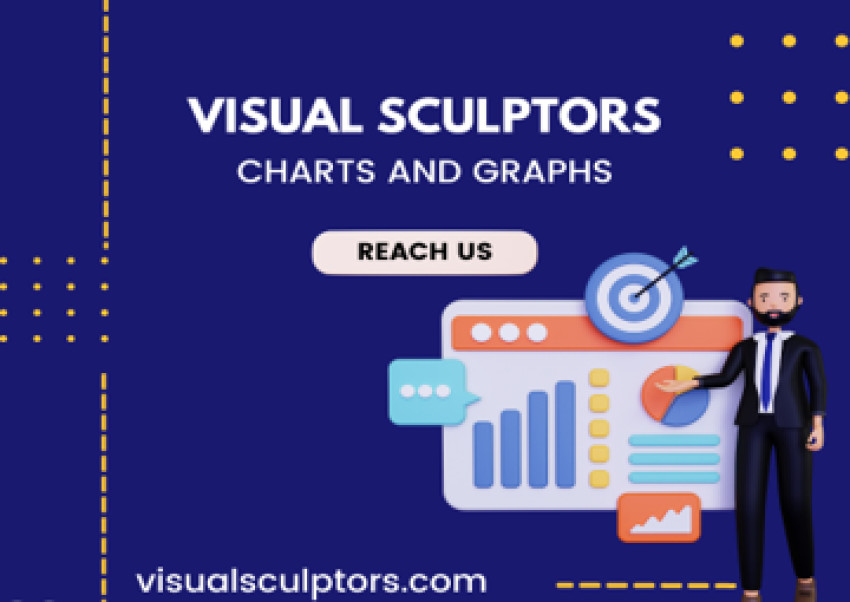
Introduction
The amount of data generated and collected daily is staggering, and it continues to grow at an exponential rate. Data visualization is the practice of presenting complex data in a visual format, such as charts, graphs, and maps, to help people understand, analyses, and make informed decisions based on the data. In recent years, data visualization has gained immense popularity and has revolutionized the way we interpret and use data. From business analytics to scientific research, data visualization has become an essential tool in extracting valuable insights from big data. In this article, we will delve into the power of data visualization and how it is helping organizations and individuals make sense of the ever-growing pool of data. We will explore its benefits, techniques, and real-life examples, and discuss why it has become a crucial element in the world of big data.
Simplify complex data with visuals.
Visuals can convey information in a clear, concise, and visually appealing manner. In the world of big data, this is especially important as the sheer volume and complexity of data can often be overwhelming. By utilizing data visualization techniques, complex data can be simplified and presented in a way that is easier to interpret and draw insights from. This not only saves time and effort, but also allows for more accurate and informed decision-making.
The use of visuals can also help identify patterns, trends, and outliers that may not be immediately apparent when looking at raw data. This makes data visualization an essential tool for businesses and organizations looking to make sense of big data and make data-driven decisions.
Enhance decision-making with visualizations.
Data visualization has become a crucial aspect of decision-making in data-driven world. With the abundance of data available, it can be overwhelming and challenging to make sense of it all. However, by utilizing visualizations, decision-makers can easily identify patterns and trends that may not have been apparent in raw data. These visual representations of data can also help in identifying outliers or anomalies, allowing for more accurate and informed decision-making. Moreover, visualizations make it easier to communicate complex data to stakeholders, ensuring a better understanding and alignment of decisions.
In addition to simplifying complex data, visualizations also allow for a more efficient decision-making process. With the use of interactive charts, graphs, and maps, decision-makers can quickly explore and analyses different data points, empowering them to make data-driven decisions in a timely manner. This is especially important in industries such as finance, marketing, and healthcare, where decisions need to be made quickly and accurately. By enhancing decision-making with visualizations, organizations can gain a competitive edge and stay ahead rapidly evolving business landscape.
Communicate insights effectively through visuals.
Visuals are a powerful tool for communicating insights in an effective and efficient manner. Business environment, decision-makers are bombarded with large amounts of data, making it challenging to make sense of it all. This is where data visualization comes in to play. By presenting information in a visual format, complex data can be simplified, and patterns, outliers, and trends can be easily identified. This not only saves time but also enables decision-makers to quickly grasp the key takeaways and make informed decisions.
Not only does data visualization simplify complex data, but it also enables efficient exploration and analysis. With interactive visuals, decision-makers can easily drill down into specific data points and gain a deeper understanding of the underlying trends and patterns. This allows for a more thorough analysis and a better understanding of the data. Additionally, visuals provide a common language for communication among stakeholders, facilitating better alignment and decision-making. By effectively communicating insights through visuals, decision-makers can make sense of big data and use it to drive business success.
Unlock patterns and trends visually.
Visualizing data is a powerful way to unlock patterns and trends that may not be easily identifiable through traditional means. By presenting complex data in a simplified and visually appealing format, data visualization allows for a deeper understanding of insights and correlations that may have gone unnoticed. This is especially important in the context of big data, where the volume and complexity of information can be overwhelming without the aid of visual aids. Using charts, graphs, and interactive dashboards, data visualization enables decision-makers to quickly make sense of large amounts of data, leading to more informed and effective decision-making.
In addition to aiding in data analysis, visual representations also facilitate better communication among stakeholders. The use of data visualization can bridge the gap between technical experts and non-technical individuals, as it presents information in a way that is easily digestible for all audiences. This not only promotes better understanding of data insights but also encourages collaboration and alignment in decision-making processes. With the power of data visualization, organizations can unlock valuable patterns and trends, leading to more efficient and effective use of big data.
Maximize data comprehension with visualization.
Data is a powerful tool and data-driven world. However, the abundance of data can often be overwhelming and make it challenging to extract meaningful insights. This is where data visualization comes in. By presenting data in a visual format, complex information can be easily understood and analysed, leading to better decision-making.
In fact, research has shown that the human brain processes visual information more efficiently than text or numerical data. This means that by utilizing data visualization techniques, organizations can maximize their data comprehension and gain a competitive advantage in the market. This is especially crucial in the era of big data, where organizations are inundated with vast amounts of data that can be difficult to make sense of without the aid of visual representations.
Final note
Data visualization is an essential tool in understanding and analyzing large amounts of data. With the rise of big data, it has become increasingly important for businesses to effectively interpret and communicate their data. With visual aids, complex data can be simplified, and insights can be gained, leading to better decision-making and improved business strategies. As we continue to gather and analyse vast amounts of data, the power of data visualization will only become more crucial in helping us make sense of it all. Investing in data visualization is not only beneficial, but necessary for success.
Are you in need of a proficient design agency to enhance and elevate your upcoming professional presentation?
Visual Sculptors - Led by Ex-McKinsey designers’ team.
We invite you to explore the finest presentation design agencies, where our adept team at Visual Sculptors awaits the opportunity to engage in meaningful discussions regarding your forthcoming presentation design endeavour.




